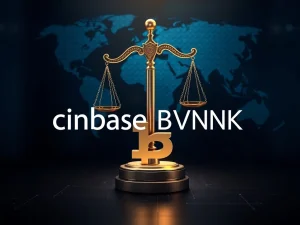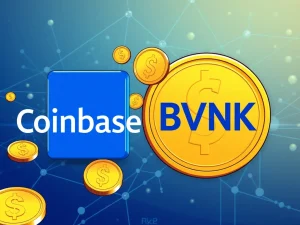ECB Blockchain: Revolutionizing Euro Settlement by 2026

The financial world is abuzz with news from the European Central Bank (ECB), which is set to embark on a groundbreaking journey into the realm of distributed ledger technology (DLT). Imagine a future where financial transactions are not just faster and more secure, but also seamlessly integrated with the latest digital innovations. This isn’t science fiction; it’s the vision behind the ECB’s ambitious plan to pilot a blockchain-based euro settlement system by late 2026. This move signals a significant step towards modernizing Europe’s financial infrastructure, leveraging the power of ECB blockchain initiatives to redefine how money moves across the eurozone.
ECB Blockchain: Paving the Way for Modern Finance
The European Central Bank has officially given the green light to a strategic two-track plan aimed at settling distributed ledger technology (DLT) transactions using central bank money. This pivotal decision has the potential to fundamentally transform Europe’s financial system, making it more efficient, resilient, and ready for the digital age. The initiative, dubbed “Pontes,” represents the first critical track. It’s designed as a short-term solution, focusing on establishing direct links between blockchain-based DLT platforms and “TARGET Services.” TARGET Services are the backbone of the Eurosystem’s financial operations, facilitating the smooth flow of payments and securities within the eurozone. The pilot for Pontes is slated for launch by the end of the third quarter of 2026, building upon extensive insights gleaned from the ECB’s 2024 exploratory DLT trials. These trials involved over 50 experiments and engaged 64 participants, providing a robust foundation for testing a unified settlement system in central bank money.
Understanding Euro Settlement and DLT Platforms
At its core, euro settlement involves the final transfer of funds between financial institutions. Traditionally, this process can be complex and time-consuming. DLT, the technology underpinning blockchain, offers a revolutionary alternative. By creating a shared, immutable ledger, DLT can streamline transactions, reduce intermediaries, and enhance transparency. The ECB’s move signifies a recognition of DLT’s transformative potential, not just for niche crypto assets, but for mainstream financial operations. The integration of DLT platforms with existing systems like TARGET Services is crucial for ensuring seamless interoperability and avoiding fragmentation within the financial landscape. This approach aims to bring the benefits of DLT – such as atomic settlement (where both sides of a transaction settle simultaneously) and programmability – to the highly regulated world of central bank money.
Central Bank Money: The Core of Europe’s Digital Ambition
A key finding from the ECB’s exploratory DLT work was the strong market demand for settling tokenized assets in central bank money. Trials conducted by the ECB saw 1.6 billion euros ($1.88 billion) settled, involving 64 participants across Europe. This underscores the industry’s desire for a secure, trusted, and efficient means of settlement that leverages the stability of central bank funds. The ECB’s commitment ensures that as financial markets evolve with DLT, the underlying settlement mechanism remains anchored in the stability and trust provided by central bank money, rather than commercial bank money or volatile cryptocurrencies. This focus on central bank money is vital for maintaining financial stability and public confidence in the digital era.
Financial System Modernization: The Dual Track Approach
Beyond “Pontes,” the ECB has unveiled “Appia,” its second track, which takes a longer-term, more ambitious view towards financial system modernization. Appia aims to foster an “integrated ecosystem in Europe that also facilitates safe and efficient operations at the global level.” This involves continuous study of DLT applications in wholesale central bank settlements, coupled with close collaboration with both public and private sector partners. This dual-track strategy highlights the ECB’s comprehensive vision: address immediate needs with Pontes while strategically planning for future innovation with Appia. To ensure ongoing dialogue and gather crucial feedback from industry stakeholders, the Eurosystem will also establish market contact groups for both initiatives. This collaborative approach is essential for successful implementation and widespread adoption.
What Are the Benefits and Challenges Ahead?
The potential benefits of the ECB’s initiative are substantial:
- Reduced Fragmentation: A unified DLT settlement system can help overcome the current fragmentation in capital markets.
- Enhanced Efficiency: Atomic settlement and programmable transactions can significantly speed up processes and reduce operational costs.
- Improved Resilience: DLT’s distributed nature can enhance the resilience of financial market infrastructures.
- Innovation Support: By embracing DLT, the ECB supports innovation while upholding safety and efficiency standards.
However, challenges remain. The ECB report highlighted the need for:
- Standardization: Ensuring common technical standards across various DLT platforms.
- Harmonized Legal Frameworks: Developing consistent legal clarity for DLT-based transactions across jurisdictions.
- Interoperability: Creating seamless links between DLT systems and existing core financial infrastructures like TARGET Services.
These challenges require ongoing collaboration between regulators, central banks, and private sector participants to ensure a smooth transition and successful integration.
Looking Ahead: A Glimpse into Europe’s Digital Financial Future
The ECB’s commitment to piloting a blockchain-based euro settlement system marks a significant milestone in the evolution of global finance. This strategic move positions Europe at the forefront of digital innovation, demonstrating how central banks can embrace emerging technologies to enhance the safety, efficiency, and resilience of their financial market infrastructures. While the road ahead involves navigating complex technical and regulatory landscapes, the strong market demand for central bank money settlement on DLT platforms, coupled with the ECB’s methodical dual-track approach, suggests a promising future. As the pilot for “Pontes” approaches in 2026, the world will be watching to see how this initiative reshapes the very foundations of euro settlement and propels Europe into a new era of digital finance. This isn’t just about technology; it’s about building a more robust and adaptive financial system for tomorrow.







